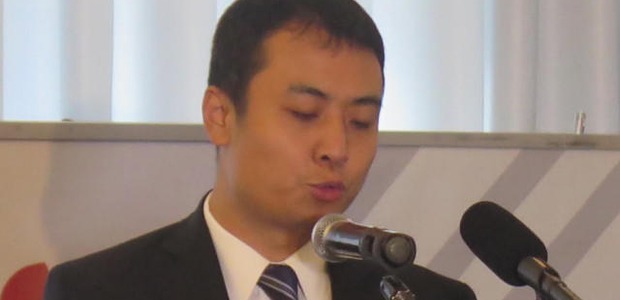advertisement
Huawei to drive enterprise mobility with the launch of Mate 8
This is a direct response to the technology shift where the PC economy continues to fade; organizations are faced with…

This is a direct response to the technology shift where the PC economy continues to fade; organizations are faced with a radical change in architecture, operations and system governance. This has forced businesses to rethink everything they understand about IT and focus on putting mobility at the center of their operations.
The Mate 8 will allow users to interact with the device’s security system, for instance wiping it clean incase of an information breech. Speaking during the launch at a CIO breakfast event in Radisson Blu Hotel Nairobi, Dean Yu CEO, Huawei Technologies said in as much as devices are inherently difficult to secure, the Mate 8 access controls to enterprise resources are robust which is a lot more than just the user pass keys. The device boasts significantly enhanced power, efficiency and battery life and also features a customizable, and the latest version of Huawei Android skin, the EMUI 4.0 Marshmallow.
He also added, “To maintain an upward demand for such Internet services and reduced cost of Internet enabled devices, we intend to launch more devices in the coming months with a focus on high end and middle level models, open more flagship shops in key markets across Kenya, and increase engagement with our retailers and wholesalers. This will aid in growing our device market share from 15% to 25% by end of 2016.”
advertisement
Since tomorrow’s employees will have much more access to information, digital enterprise revolves around making information mobile, the Mate 8 is therefore designed to help users connect not only to company data via the cloud but also to data from customers, suppliers and relevant outside sources including social media and internet connected sources.
“The explosive growth in mobile computing is on enterprise radars everywhere as organisations position to take advantage of its power and flexibility. The workforce is communicating socially and collaborating professionally on mobile devices daily. Enterprise mobility is just beginning and fed by an increasingly BYOD-driven generation of workers,” said Harry Hare, Publisher and CEO, CIO East Africa.
“The good news for CIOs is that they will be able to make better decisions by accessing analytics from the device at a cost of KES 69,999.” Says Mark Hemaobin, Head of Devices, Huawei Kenya. Mobile computing has given people a sense of power; they have choices in what device to use, the applications to use and how to use them.
advertisement
According to a recent report by the International Telecommunication Union, mobile technology has played a crucial role in promoting financial inclusion in Sub – Saharan Africa where less than 20 percent of the household have access to formal financial services. The liberalization of various communication sectors in these countries have made it possible for huge organizations like Huawei to expand their brand and compete for the market share.
The ICT Sector Quarterly Statistics Report for the first quarter of the Financial Year 2015/16 showed a 4.7 percent growth of mobile subscriptions in Kenya to reach 37.8 million up from 36.1 million registered during the previous quarter. Subsequently the growth in mobile penetration grew by 4.2 percentage points from 83.9 percent during the previous quarter to 88.1 percent during the quarter under review. This is a clear indication that the Smartphone industry is on a rapid growth to meet the increase in demand.
According to the same report by The Communication Authority of Kenya, the estimated number of Internet users stood at 31.9 million up from 29.6 million users estimated during the previous quarter. Subsequently, the population that had access to Internet services reached 74.2 per 100 inhabitants up from 69.0 per 100 inhabitants recorded during the previous quarter.
advertisement
To maintain an upward demand for such Internet services and reduced cost of Internet enabled devices, Huawei intends to launch more devices in the coming months with a focus on high end and middle level models. This will aid in growing its device market share from 15% to 25% by end of 2016.
Apart from the Mate 8 business and security features, Huawei Knuckle Software will let users perform certain tasks using their knuckles and its split screen mode allows two different apps to be opened on the top and bottom portions of the screen.
Digital transformation is not a technology problem but a leadership problem, by launching the device among the CIOs in Nairobi, Huawei believes that they are ready to engage with the business operations and make enterprise mobility a reality through proper choice of devices that can accommodate enterprise architectures.